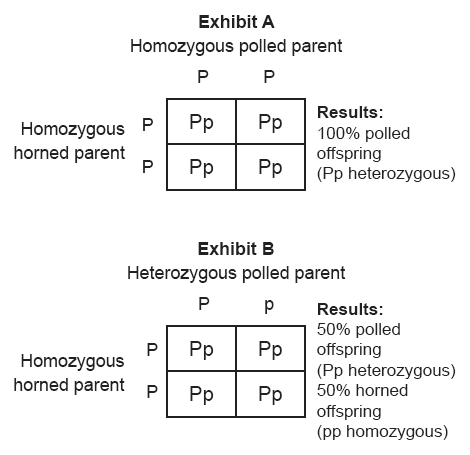 The polled gene in dairy cattle has been a subject of significant interest in the agricultural community, offering potential advantages for both farmers and the animals themselves. The term “polled” refers to the absence of horns in cattle, and this trait is controlled by a specific gene. In this article, we will explore how the polled gene works in dairy cattle and its implications for the dairy farming industry.
The polled gene in dairy cattle has been a subject of significant interest in the agricultural community, offering potential advantages for both farmers and the animals themselves. The term “polled” refers to the absence of horns in cattle, and this trait is controlled by a specific gene. In this article, we will explore how the polled gene works in dairy cattle and its implications for the dairy farming industry.
Genetics of the Polled Trait:
The polled trait is inherited in a Mendelian fashion, meaning it is controlled by a single gene with two possible alleles – one for the presence of horns (H) and the other for the absence of horns (h). The polled gene is a dominant one, where the presence of at least one copy of the polled allele (h) results in the polled phenotype. Therefore, cattle can be either homozygous polled (hh) or heterozygous polled (Hh) to exhibit the polled trait.
Advantages of Polled Cattle:
- Safety and Handling: One of the primary advantages of polled cattle is the enhanced safety during handling. Horned cattle can pose a risk to both farmers and other animals, as they may inadvertently cause injuries. Polled cattle eliminate this risk, making them easier to manage.
- Reduced Aggression: Horned cattle may exhibit more aggressive behavior, especially during feeding or in confined spaces. Polled cattle tend to be less aggressive, contributing to a more harmonious and stress-free environment on the farm.
- Space Efficiency: Horned cattle may require more space to prevent injuries due to horn clashes. The absence of horns in polled cattle allows for more efficient use of space within barns and feeding areas.
Breeding Strategies:
To propagate the polled trait in a cattle herd, farmers can adopt specific breeding strategies. By selectively mating polled individuals or carriers of the polled allele (Hh) with other polled cattle, farmers can increase the prevalence of the polled gene in subsequent generations. Genetic testing can be employed to identify carriers and ensure informed breeding decisions.
Challenges and Considerations:
While the polled trait offers numerous benefits, it is essential for farmers to consider other traits relevant to dairy production, such as milk yield, reproductive performance, and overall health. Balancing the selection for the polled trait with the maintenance of desirable production characteristics is crucial for sustainable and profitable dairy farming.
The polled gene in dairy cattle represents a valuable tool for farmers seeking to enhance safety, efficiency, and overall management on their farms. Through careful breeding strategies and the incorporation of genetic testing, the polled trait can be selectively propagated to create a herd of cattle that combines both desirable production traits and the polled advantage. As advancements in genetic research continue, the dairy industry can look forward to further improvements in breeding practices and the overall well-being of cattle.









